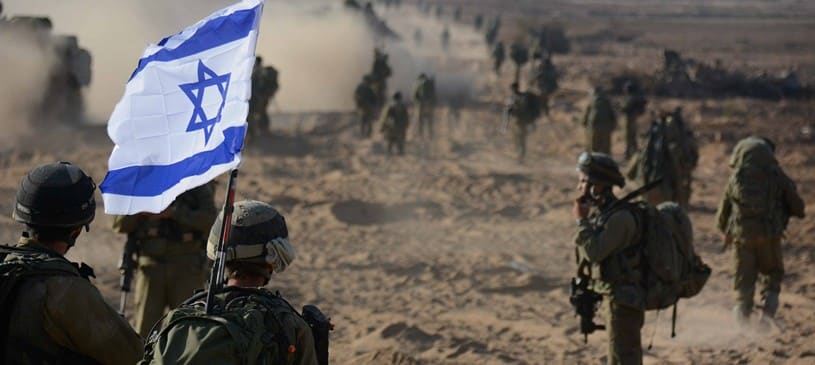* This document was written in January 2024. In view of the fast pace of wartime developments, the IDSF-Habithonistim website should be consulted for updates and specifics.
The barbaric terrorist attack by Hamas on October 7, 2023 was a turning point in thinking with respect to Israel’s security approach, and it dispelled many of the assumptions, at the base of that approach, regarding the security environment in which Israel operates. In the “Strategic Assessment for Israel, 2022,”[1] the IDSF-Habithonistim movement presented two possible scenarios for an impending war — a “Yom Kippur” scenario or a “Six Day War” scenario. It was clear to us that if Israel continued to deceive itself regarding its own strength, to postpone vital issues that require resolution, and to believe that its display of superiority in air power and in intelligence during “the war between the wars” would deter its enemies, then before long it would face a “Yom Kippur” surprise attack scenario once again, 50 years later.
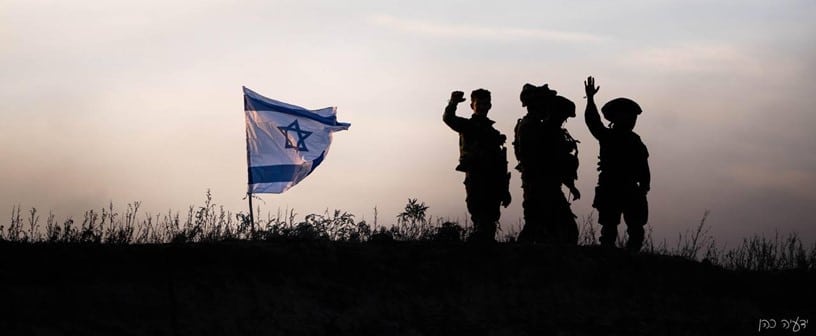
In actual fact, the State of Israel today is waging an existential war, with American assistance, against the Iranian axis. Over the years, the regime in Tehran has been following a systematic plan of force buildup both inside Iran itself and in a number of countries and territories surrounding the State of Israel, in order on the one hand to inflict harm on Israel and undermine its ability to survive, while on the other hand deterring Israel from any initiatives against Iran and the Iranian proxies. Its ultimate goal, according to the ideology of the Islamic Revolution, is to dominate the entire Middle East.
At the same time, the Palestinians — that is, both the Palestinian Authority and Hamas — are working, in their separate ways, to bring Zionism to an end. Their efforts are consistent with the narrative of armed struggle against Israel that is accepted by a decisive majority of the Palestinian people.
In the current Gaza war, Israel is advancing powerfully toward the accomplishment of the objectives that the cabinet set: toppling the rule of Hamas, eliminating its ability to mount terror attacks against Israel from the Gaza Strip, and returning the hostages home. The IDF and the security services are attaining remarkable achievements in the Gaza Strip, including the termination of many terrorists, the control of sizeable areas, the extensive dismantling of terrorist and administrative infrastructures, the destruction of war materiel, and unprecedented warfare in underground tunnels that requires history-making innovation in battle techniques. On the northern front, against Hezbollah, Israel may respond to the intensifying conflict with a variety of scenarios for pushing the Radwan forces far away from the border and deterring the organization from further escalating its attacks against Israeli soldiers and civilians. More than 100 thousand Israelis from the north and south have found themselves evacuated from their homes because of the danger in the north and the destruction of communities in the south.
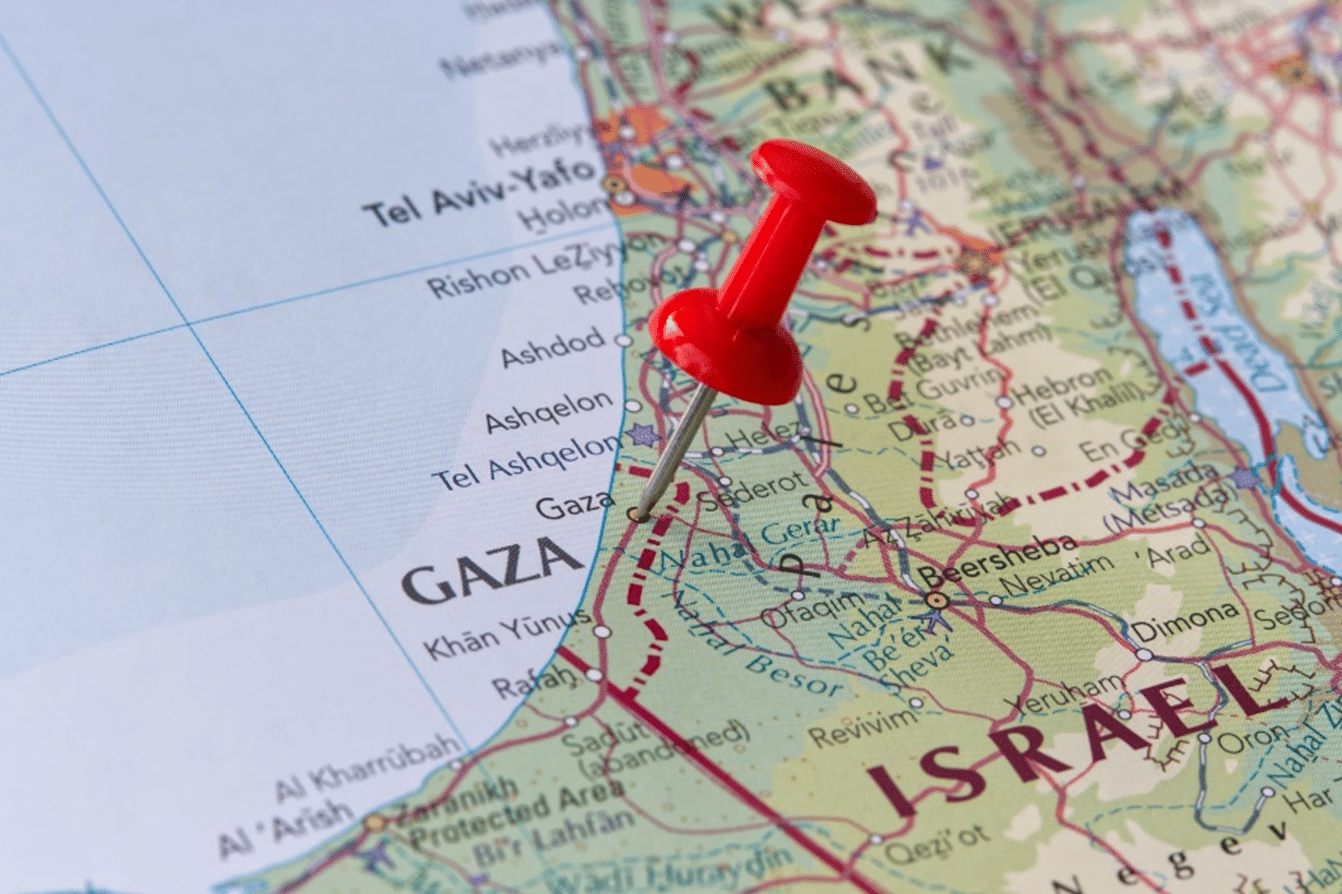
Four simultaneously active vectors are influencing the course of the war:
The multi-front campaign against the “octopus” of the Iranian axis: The Iranian force buildup has brought the Iranian regime the actual capacity to instigate a “button-pushing” scenario against Israel, challenging Israel in a multi-front war from a number of directions simulatenously. Even if the Iranian regime denies its direct involvement in the order to mount a massacre on October 7, still it is plainly the chief sponsor of Hamas and has provided full diplomatic and military support since then to Hamas and to the other Iranian proxies. The October 7 massacre thus brought Israel into war on 7 Iranian fronts, the primary one being Gaza, the secondary one (for now) being against Hezbollah in Lebanon, and the others being against Iran itself, the Houthis in Yemen, and terrorists in Judea and Samaria, Iraq, and Syria. Through the IRGC – Islamic Revolutionary Guard Corps’ Quds Force, Iran is investing hundreds of billions of dollars in supporting Hamas, Hezbollah, the Houthi rebel organization, and proxy brigades in Iraq and Syria, as well as in destabilizing the Sunni regimes of Bahrain, Saudi Arabia, Egypt, and Tunisia and other regimes in the Middle East, Africa, Europe, the USA, and Southeast Asia.
- The nuclear threat: Iran today is a nuclear threshold state. According to the International Atomic Energy Agency (IAEA), Iran is capable of amassing enough fissile material – 90% enriched uranium – for its first nuclear explosive device within two weeks of the moment of decision, and it can produce an amount of weapon-grade uranium sufficient for 5 bombs within 3 months. It will have a real opportunity to pursue nuclear weaponry if it obtains the technology for manufacturing a bomb and coupling it with the means of delivery (a suitable surface-to-surface missile). If Iran becomes a nuclear state, it will hold the key to dominating the Middle East. Nuclear weapons are not merely an armament project. They extend an umbrella under which Iran can deter Arab nations and turn them into allies despite themselves, reverse the diplomatic accomplishments of the Abraham Accords as it pushes Israel aside, and enjoy membership in the prestigious, exclusive club of nuclear states, unlike its neighbors in the Middle East (other than Pakistan). Israel cannot reconcile itself to a nuclear Iran. Israel will need to use all applicable means, including military means, in order to neutralize the threat.
- Conventional and unconventional weapons — precision missiles, surface-to-surface missiles, advanced long-range UAVs that can carry conventional and unconventional warheads: According to reports, the Iranian missile program has positioned Iran as the country with the largest missile arsenal in the Middle East. Iran has surrounded Israel with a network of high-trajectory missiles, attack drones, and precision cruise missiles, nurturing such capabilities among Hezbollah, the Houthis, the militias answering to Iran in Iraq and Syria, and Hamas.
- Terror infrastructures around the world — the Iranian regime’s commitment to insure its survival by liquidating its domestic opposition, and to destroy Israel, is demonstrated by its construction of terror infrastructures abroad, by the use of force via proxies surrounding Israel, and by attempts – some successful — to mount terror attacks against Jews and Israelis around the world.
- For the sake of its objectives, Iran is also leveraging the competition between the great powers over the world order. Its objectives include harming the primacy of the West as led by the USA. The West’s reluctance to fight against the strengthening of the Russian-Chinese-Iranian axis only fuels that strengthening.

It is no longer possible to distinguish between Iran as “the head of the snake” and the arenas of conflict that challenge Israel’s security and inflict heavy casualties, especially after October 7. The force buildup of Hamas, Hezbollah, the Houthis, and the region’s militias in general — which forced Israel into a war for its survival, with a broad call-up of reserves and with unprecedented volunteerism from the public — has inflicted, and continues to inflict, heavy casualties and obliges Israel to fight for its life every day against the “wild thorns” that are constantly regrowing. Those challenges hark back again and again to Iran and to the Palestinian narrative, two arenas where the international community systematically refrains from frontal counterattack.
Instead, the USA and the rest of the free world have so far employed strategic confusion while torn between their reluctance to use force and be dragged into escalation on the one hand and their need, on the other hand, to deal with (a) the challenges to freedom of international navigation as Iran sends the Houthis to disrupt the Bab al-Mandab Strait in the Red Sea, a passage critical to global stability, as well as the Persian Gulf; (b) with Hezbollah’s threat to Israel’s security; and (c) with direct attacks by Iranian proxies, and at times even by Iran itself, against American bases in Iraq and Syria.
As a result of that reluctance to confront the security challenges of the Middle East, and the wish to avoid escalation, the Western policy only fuels the currents of escalation by Iran and the Palestinians. Meanwhile, the Russian-Chinese-Iranian axis is becoming firmer and is working aggressively to fulfill its vision as in Russia’s February 2022 invasion of Ukraine, in the Chinese threats to invade Taiwan, and in the Iranian incitement around the Middle East. At the same time, terrorism on European soil is constantly instigated by Iran, and to a certain degree by the other parties of the axis, whether in the form of assassinations, attempted terror attacks, or cyberattacks. That axis is joined by North Korea, which participates with its efforts at military buildup; by Venezuela, which participates in applying pressure on world energy supplies; and by South Africa, which is strengthening its ties with Iran, Russia, and China, and which filed the charges against Israel at the International Court of Justice in the Hague (ICJ). Aside from all the above, the emerging BRICS organization is threatening to undermine the predominance of the dollar in world commerce and the predominance of Pax Americana in global geopolitics.
Amidst it all, Israel finds itself facing a significant political challenge. Although support for Israel from the USA is significant and even strategic, both in the form of armaments and in the political arena, along with support for Israel’s right to self-defense on the part of the European Parliament and of important countries in Europe — the UK, France, Spain, Germany, and Italy — along with Austria, Hungary, the Czech Republic, Israel on the other hand has difficulty recruiting support from the international community for intensifying the war in order to defeat Hamas, for direct confrontation with Iran and with the network it has built in the region, and for a clear statement opposing the Palestinian Authority, its struggle against Zionism, and the notion of establishing a Palestinian state between the river and the sea. On the contrary, most elements of the international community, with the backing of most of the pragmatic Arab countries, are attempting to turn October 7, and their support for Israel’s right to self-defense, into a form of leverage to advance the Two State Solution and impose it on Israel.
Simultaneously with all that, anti-Semitism is constantly intensifying around the world and is expressing itself in legitimacy of Hamas on the part of worldwide extreme left and progressive elements, including in prominent media outlets. Calls to eliminate Israel and to “free Palestine from the river to the sea,” rallies in support of Hamas, calls for an intifada against the Jews and for gassing Jews, and an atmosphere of fear on the campuses, in the Jewish communities, and on social media, all go unmet by any sufficiently clear pronouncement on the part of the leadership. On social media, young people around the world are exposed to disinformation that attaches an extremely negative image to Israel with no explanation of the reason for going to war and no precautions against fake news. Moreover, huge demonstrations in London, Paris, and Barcelona challenge those countries’ leaders to think twice about supporting Israel and have even brought about a shock to British politics and a change in the stand of the French president, who began to support a ceasefire, the creation of a Palestinian state, and a sharp condemnation of Israel’s killing of Palestinians in Gaza. This attitude is based on numbers supplied by Hamas itself to human-rights groups, who have long been recruits to the Palestinian narrative and who rally well-intentioned public opinion to the belief that Israel represents the opposite of modern attitudes and, like Russia or Iran, is raising an obstacle to peace.
The UN has itself turned into an active player in the diplomatic campaign against Israel, by adopting the figures of the “Gazan Ministry of Health,” which is to say Hamas propaganda, as official statistics; accusations of “child-killing” against Israel for eliminating 17-year-old terrorists who are aiming guns at Israeli soldiers and citizens; almost unprecedented invocation of Article 99 by the UN Secretary-General and creation of an emergency atmosphere by means of urgently held meetings, biased statements by the UN Secretary-General and the UN agencies, and massive voting at the UN General Assembly — 16 times against Israel in 2023 as opposed to 7 times against all other nations of the world combined.
In order to help right the balance, and contribute to Middle East stability – and by consequence global stability – the US should lead a regional coalition against Iran while posing its nuclear program with a credible military threat. That coalition must include Israel and the pragmatic Arab states, with participation from European countries, and broaden the circle of peace to include Saudi Arabia. Such a coalition will reinforce the Arab countries’ security by backing their national interests with the West’s determination to confront Iran resolutely, and it will significantly heighten Israel’s prospects of militarily eliminating the Iranian nuclear threat. The normalization package with Saudi Arabia could also include its involvement — together with the UAE andBahrein in the future of Gaza, including in efforts of rehabilitation and in fundamental changes in the inciteful content within the educational system.

The Palestinian struggle for all of the Land of Israel: Hamas, the Palestinian Authority and Governability
- Hamas is currently enjoying unprecedented popularity among Palestinians in the wake of its unparalleled success in carrying out the October 7 massacre. 75% of all Palestinians in Judea, Samaria, and Gaza are in favor or strongly in favor of the massacre, according to public opinion surveys. The gap between a Hamas candidate and any other Fatah candidate, including Mahmoud Abbas (Abu Mazen), Chairman of the Palestinian Authority, has only widened. This is a demonstration of the broad-based support among Palestinians for the armed struggle against Zionism.
The massacre, which resulted in the murder of more than 1,200 Israelis, thousands of injured and some 250 persons being taken hostage, including foreign nationals, came after years of strategic containment by Israel of the Hamas threat. This policy, which was shared by the political and professional echelons in the security forces, was based on a misguided concept regarding the organization’s intentions and capabilities. Israel put in place mechanisms of habituation, including for the threat from the rockets, the incendiary balloons, and the riots along the separation fence, and enabled Qatar to pump some $30 million USD monthly into the Gaza Strip as an artificial respirator for the Hamas regime. Egypt on its part did too little to prevent immense quantities of weaponry flow into the Gaza Strip through tunnels dug under the Philadelphi Route and via the Rafah Crossing.
The October 7 massacre led Israel to realize that life alongside the threat was no longer tenable and it is now committed to the total annihilation of its military and administrative capabilities in the Gaza Strip. The extensive network of assault and defensive tunnels throughout the Gaza Strip, the tremendous amounts of weaponry and their clever blending in with the civilian population, plus the methodical and deliberate detention of innocent Israeli hostages, pose a formidable challenge to the use of force by the IDF and require it to resort to creative solutions.
As part of its convergence of theaters strategy, Hamas has also built up its force in Judea and Samaria and in Lebanon. The Hamas offshoot in South Lebanon joins with Hezbollah in firing rockets toward the north of the country. Salah al-Arouri was assassinated in Beirut’s Dahia Quarter. Al-Arouri was Hamas’ number 2 man and a prominent pro-Iranian figure in the organization. Among other things, he orchestrated the build-up of the Hamas network in Lebanon and in Judea and Samaria.
In Judea and Samaria (“West Bank”), the IDF and the Israel Security Agency (Shin Bet) are at work thwarting the buildup of the various terrorist infrastructures. This includes the use of air strikes as a regular modus operandi to assassinate operatives – for the first time since the Second Intifada; arresting Hamas members even without intelligence indicating intent to commit terrorist attacks in the immediate term; the arrest of some 3,000 terrorists since October 7 and some 1,400 additional ones since the beginning of 2023; the elimination of hundreds of terrorists; and seizure of large quantities of weapons, including mortars and experimental rockets.
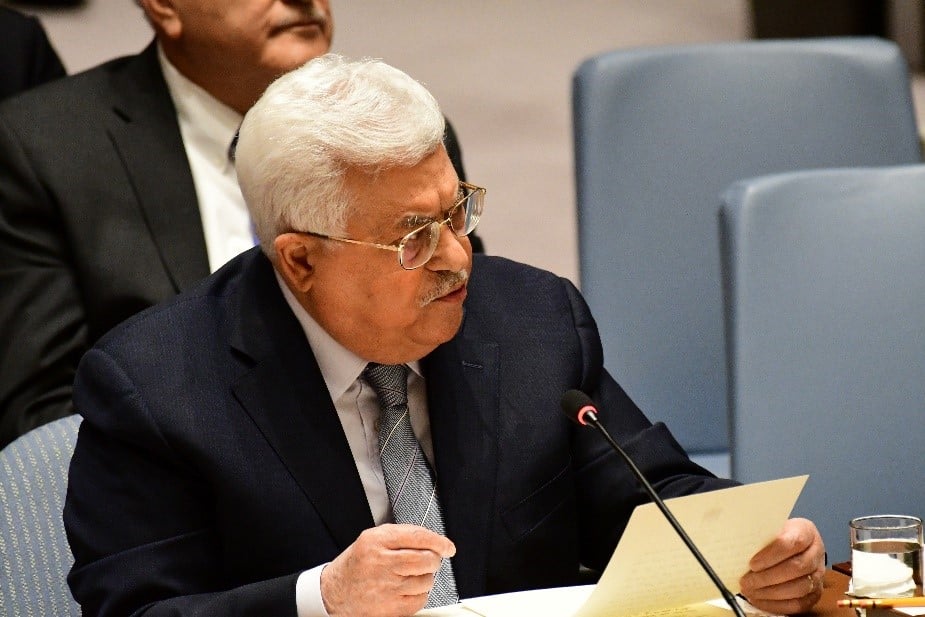
Mahmoud Abbas, Chairman of the Palestinian Authority, is still refusing to condemn the October 7 massacre, accuses “Israeli crimes” of being responsible for it, calls for the continuation of “armed resistance” and is paying over $370 million USD per year as wages for terrorists (“Pay for Slay”)
- The Palestinian Authority is stoking the incitement narrative through its senior officials’ statements, through the media, through the education system and through its mechanism of wages paid out to terrorists stipulated by law. And yet, many in the international community as well as some in Israel still perceive it as a viable option for leading a political solution with Israel. The Palestinian Authority enjoys a moderate image of a Palestinian government, while its leaders refuse to condemn the massacre and many of them even praise it – for example Mahmoud al-Aaloul, Mahmoud Abbas’s deputy; Jibril Rajoub, a Fatah senior official; Hussein a-Sheikh, a senior minister in the PA; and others, who praise the “Palestinian heroism” of October 7 against the “Israeli occupation’s terrorism”, and even called for a re-enactment of that massacre in the Judea and Samaria arena. Marwan Barghouthi, who is serving a prison term in Israel, even called on the PA’s security forces to turn their weapons against Israel. Mahmoud Abbas, for his part, avoided condemning the massacre and accused Israel of responsibility for it, due to its “crimes” against the Palestinian people over the past 75 years. Abbas repeated these arguments also during official meetings with world leaders.[2]
The US, for its part, still regards the PA to be a significant partner, although to placate Israel it adds a demand for profound reforming of the PA under the banner of a “revamped and revitalized Palestinian Authority”. The US and European countries also continue to stick to the narrative of the “Two State Solution” based on the 1967 borders, which Israel has difficulties rebuffing with a strategic plan of its own, in view of the catastrophic outcome such a strategy would inflict upon it. Israel has made it clear to the US that the PA has no place in Gaza’s future. The PA, on its part, rejects the American demands and continues to stoke the incitement. Fatah takes pride on social media that its military wing, the Al-Aqsa Martyrs Brigades, took part in the massacre, and praised the terrorists. The PA itself continues to invest 7% of its budget, some $370 million USD per year, paying exorbitant salaries to incarcerated terrorists, released terrorists, and dead terrorists’ families – including the Nukhba terrorists of October 7. Released terrorists are entitled to a host of social benefits and automatic employment in the PA apparatus.
The PA is pressing on with its momentum of illegal construction under the banner of the “Fayyad Plan”, within which territories within Area C have been filled with some 80 thousand illegal buildings, including along strategic traffic routes and adjoining Area B in an attempt to create territorial continuity between Palestinian population centers, the Israeli Arabs in the Triangle, in the center and in the north, and the Bedouin lands in the Negev.
- Terrorism in Judea and Samaria continues to pose a threat to Israeli citizens, both residents of Judea and Samaria and in the so-called “Israel Envelope” in the Tel Aviv metropolitan area, in the Jezreel Valley and in Jerusalem. In 2023, a total of 6,353 terrorist attacks have been carried out (stone throwing, Molotov cocktails, shootings, car rammings, stabbings, riots and others). 5,100 suspects have been arrested – a 31% increase over 2022 according to the Israel Security Agency’s (Shin Bet) statistics. The Shin Bet has also foiled 1,032 significant attacks in 2023 – a 118% year-on-year increase. While the IDF and the Shin Bet carry out regular raids to arrest terrorists and seize weapons, there is a continuing need to thwart intentions and means and the security forces are finding it difficult to be everywhere all the time. As a consequence, the residents’ sense of security has been severely undermined.
- On the domestic front, the abstinence of the Israeli Arabs from involvement in violence of the kind that accompanied Operation Guardian of the Walls has been noteworthy. This being said, the security forces are required to prepare themselves for the possibility of escalation on the home front.
Israel must stabilize its security situation, strive to thwart terrorist capabilities and intentions, and collapse the Palestinian nationalism, all of which threaten its national security.
- With respect to the Gaza arena, Israel must set a security target and a civilian target for the day after the destruction of Hamas.
From a security standpoint, it must maintain complete freedom of operation throughout all areas of the Gaza Strip for purposes of thwarting terror; take control of the Philadelphi Route, which divides Gaza from Egypt – especially to thwart the smuggling through the underground tunnels; establish a one kilometer-wide perimeter that will separate Gaza residents and the Israeli southern communities; and continue “cleansing” the terror infrastructure, placing emphasis on the tunnels.
From a civilian standpoint, Israel must promote regime decentralization in the Gaza Strip such that local leaders of civil administrations will manage daily affairs while committing to repudiation of the path of terror. An International Managerial Directorate that will be established will supervise the reconstruction and economic development efforts in the Gaza Strip subject to clear conduct criteria and incentives, pursuant to which the authorities that satisfy the requirements will benefit from enhanced assistance and rehabilitation. In order to avoid re-creating the status quo ante and fostering terror that will threaten Israel’s security, a Palestinian state should not be established in the Gaza Strip nor can the PA be allowed to reestablish itself there.
From the perspective of education, Israel must establish, as a red line, the long-term de-radicalization of the Gazan population, including a fundamental rehaul of the educational system. That constitutes a basic condition for any rehabilitation and development in the Gaza Strip. It would be to Israel’s benefit, if the process would be undertaken with the involvement of pragmatic, regional players, such as the UAE, Bahrain, Morocco, and even Saudi Arabia. Egypt would have a role in the new international administration, and movement to and from the Gaza Strip would pass through it.
- As to Lebanon, Israel must judiciously proceed along diplomatic and military lines as well as build itself up in advance of the possibility of an escalation to the point of a high-intensity war against Hezbollah. The US, France, and other nations of the world must join the effort to avoid such a scenario by way of enforcement of Security Council Resolution 1701 and pressure on the Lebanese government. It is possible and even likely that Israel will need to take military steps to thwart the threat posed by Hezbollah, which includes 150,000 missiles – some of which are precision missiles – rockets, and assault drones aimed at Israel; the elite Radwan force deployed along the border; and other capabilities. Hezbollah currently comprises an integral part of Lebanon’s administration, sits in the government and parliament, and, to a large extent, dominates strategic infrastructure in the country.
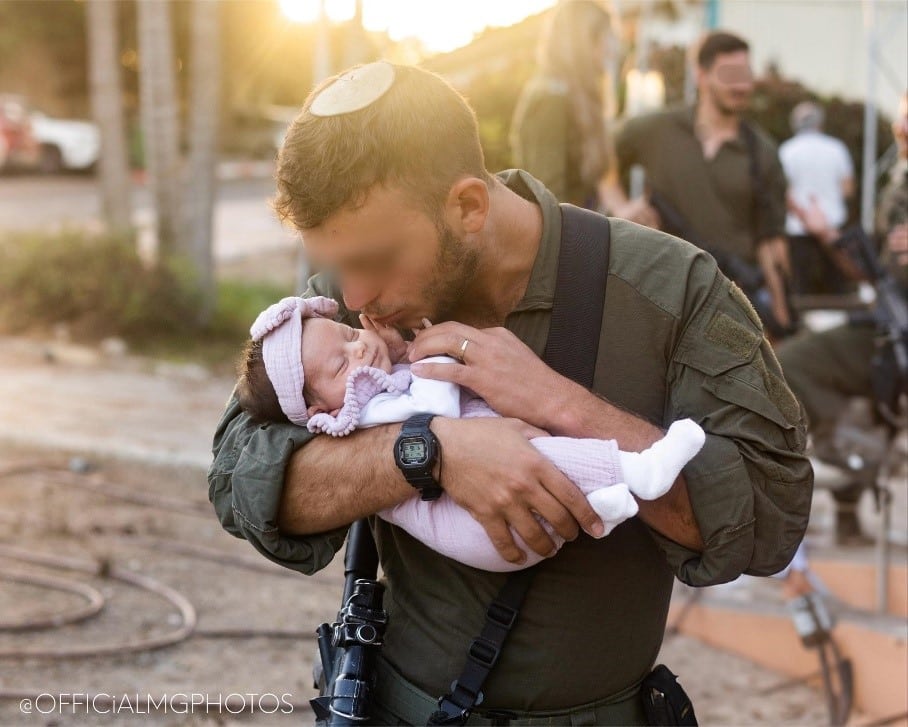
“The conviction in the justness of the cause and the sense of responsibility and commitment among the young generation must be strengthened. This conviction proved itself as a critical component in national security”
- In Judea and Samaria, Israel must continue vigorously battling terror and preventing the entrenchment of terror actors, primarily Hamas, within the region. If the right conditions present themselves, there is potential to establish the groundwork for a strategic initiative that involves enacting Israeli sovereignty over the Jordan Valley and broader sections of the surrounding region, including Area C. This area serves as a crucial defensive perimeter against the east, and a means of control over the mountain range overlooking all of the State of Israel.
- As to the PA, Israel must prepare for the day after Mahmoud Abbas and present creative solutions for independent Palestinian civilian control while continuing Israeli security control over the entire territory and preventing the establishment of a Palestinian state. The prospect of a Palestinian state, which would likely quickly fall under Hamas control, would expose Israel to the danger of a military build-up on the doorstep of most of Israel’s population centers and its strategic facilities; would serve as a breeding ground for millions of refugees, fundamentally reshaping the demographic equilibrium between the Jordan River and the sea on a permanent basis; and would, in any event, fail to satisfy Palestinian nationalistic ambitions of terminating Zionism’s trajectory throughout the Land of Israel. Solutions that include “special sovereignty” for Israelis and Palestinians, the emirates solution, and any other solution that is based on principles that are critical to Israel’s security (control over the majority of the territory, freedom of military operations) must be laid on the table for in-depth diplomatic and national discussion in cooperation with regional and global partners.
- On the security-military level, the IDF and the political echelon must formulate a new national security approach that will rely less on warning and deterrence and more on regional defense capabilities and military decisiveness, and will include capability-supported plans for the timely neutralization of threats. A multi-year plan for a new force buildup must be prepared, which would include revamping the reserves system; gradually decreasing reliance on US armaments; establishing production lines for ammunition and logistical equipment in Israel; and devoting massive budgetary supplements to security. A situation in which the IDF is found lacking in armaments, ceramic vests, and military and other equipment is unacceptable. A situation in which entire divisions are closed and reservists are barely called for retraining or missions constitutes a significant danger to national security.
- The strategic dialogue with the US must be actively pursued, and Washington must be focused on the recognition that Israel and the US are fighting jointly in the Middle Eastern inter-axis confrontation, whose results will affect the power struggle among the superpowers. This underscores the significant importance Israel holds for the US, emphasizing the critical nature of Israel’s success in overcoming Hamas. Furthermore, if needed, this extends to defeating Hezbollah and Iran as well.
- On the domestic security level, the political echelon must announce the establishment of a National Guard subject to the Israel Police and must boost the budget and capabilities of the police and the Border Guard. This entails raising salaries and enhancing conditions for military personnel, armament, and establishing strategic targets for regaining governability throughout Israel. That would include an orderly plan for the mitigation of illegal construction permeating in the Arab society and among Bedouins in the Negev (over 80,000 illegal structures), mafia protection payments, hundreds of thousands of illegal firearms, crime, polygamy, and unification of families vis-à-vis Palestinians in Judea and Samaria. Local military security coordinators, security officers, and rapid response squads must be bolstered as a compulsory component to local settlement protection thus enhancing Police and Border Guard capabilities, capabilities that on October 7 proved themselves invaluable in saving a multiple lives.
- On the settlements’ level, Israel must go back to the principles of pioneership, and a national plan must be established for Jewish settlement in the Galilee, the Negev, the Golan, Judea and Samaria, and all over Israel, based on the understanding that settlement is a strategic asset and an enhancement of security prowess, including on central junctions, critical transportation routes, and in places such as the Jordan Valley and the Galilee, which comprise a strategic expanse for the security of Israel.
- On the national level, the conviction in the justness of the cause and the sense of responsibility and commitment among the young generation must be strengthened. This conviction proved itself as a critical component in national security during the “Swords of Iron” War and throughout the history of the State of Israel. Combat soldiers who are aware of the security challenges but are energized by an understanding of Zionist principles and by the commitment to the eternity of Israel demonstrate, throughout the course of the war, the necessity of instilling Zionist values from an early age, including through the educational system as part of the strengthening of the military-society relationship and the principle of the people’s army and the nation called to action. Especially after October 7, Israeli society underwent a significant disillusionment, which includes a heightened understanding of Israel’s national security requirements as well as the importance of the offensive initiative and the fostering of national unity, which constitutes a fertile platform for projects for societal and national empowerment.
- On the social level, the political echelon, influential people in Israeli public life, and all the elements of society must be galvanized into action for the cultivation of national unity and the internalization of the sense of a common fate based on the understanding that national resilience comprises a critical security component. That includes the introduction of contents into the educational system, inter-sectorial meetings, bolstering mixed populations in urban and village settings, and social commitment to avoiding schism and opting for salient debate based on a common denominator and aimed at a joint objective. Unity is an unparalleled enhancement of security prowess
